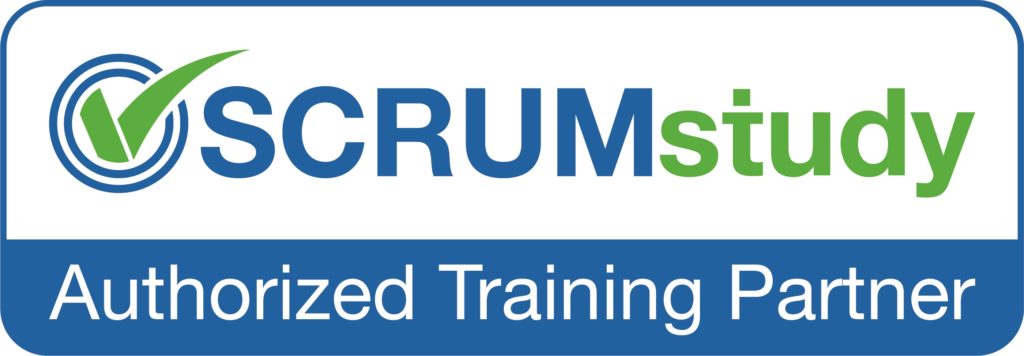category
Scrum Developer Certified (Including Exam)

Type
Virtual
Classroom ILT
Skill Level
Available dates
Learning Path
Virtual
Duration
1 Day

TYPE
Virtual
Classroom ILT
LEARNING PATH
SKILL LEVEL
DURATION
AVAILABLE DATES
Choose date
R9 100,00
Price excluding VAT
Introduction
Scrum Developer Certified (SDC™) is an entry level certification for Scrum Team members and those who interact with any Scrum Team. The objective of this certification is to ensure that Scrum Team members know enough about Scrum to effectively contribute to a Scrum project.
SCRUMstudy’s online live proctored exams allow you to take your certification exams from the comfort of your home using a webcam and a reliable internet connection.
Professional Development Units (PDUs) 14.
Audience Profile
This is highly recommended for everyone in a company who works in a Scrum Team or anyone who interacts with any Scrum Team. This will also be very useful for those who are interested in understanding the basics of Scrum and how this method could be used effectively.
Pre-requisites
There is no formal prerequisite for this certification.
Course objectives
After completing this course:
- Delegates will readily be able to recognize, dene, and work with the concepts, advantages, and challenges of the Scrum Framework
- Delegates will be prepared to work in a Scrum Team in their organizations and create deliverables as per the Scrum Framework
- Furthermore, delegates will develop an understanding of the other roles in Scrum
- Delegates will participate in role-plays, during which they carry out a Scrum project
- Delegates will gain knowledge pertaining to, and the ability to anticipate issues related to the practical implementation of Scrum
- Delegates will be armed with the proper tools to address, resolve, and take the lead on Scrum issues related to creation of deliverables
- Delegates will be provided access to an online exam. After passing the exam, each delegate’s certificate will be mailed to him or her
Course content
| Session 1: Introduction | |
|
|
|
|
|
|
| Session 2: Scrum Roles | |
|
|
|
|
|
|
| Session 3: Business Justification | |
|
|
|
|
|
|
| Session 4: Quality Aspect |
|
|
|
|
|
|
|
| Session 5: Change Aspect |
|
|
|
|
|
|
|
|
| Session 6: Risk Aspect | |
| What is Risk? |
|
|
|
|
|
|
|
|
|
| Session 7: Introduction to Scrum Project Phases | |
|
|
|
|
|
|
| Session 8: Initiate Phase | |
|
|
|
|
|
|
| Session 9: Plan and Estimate Phase |
|
|
|
|
|
| Session 10: Implement Phase |
|
|
|
| Session 11: Review and Retrospect Phase |
|
|
| Session 12: Release Phase |
|
|
Associated certifications and exam
This course prepares students to write the SCRUMstudy’s Scrum Developer Certified Exam.
On successful completion of this course students will receive a Torque IT attendance certificate.

Scrum Overview
Scrum is the most popular Agile framework. It is an adaptive, iterative, fast, flexible, and effective methodology designed to deliver significant value quickly and throughout a project.
Scrum ensures transparency in communication and creates an environment of collective accountability and continuous progress. The Scrum framework, as described in the Scrum Body of Knowledge Guide (SBOK™), is structured in such a way that it supports product and service development in all types of industries and in any type of project, irrespective of its complexity.
A Scrum project involves a collaborative effort to create a new product, service, or other result as defined in the Project Vision Statement. Projects are impacted by constraints of time, cost, scope, quality, resources, organizational capabilities, and other limitations that make them difficult to plan, execute, manage, and ultimately succeed. However, successful implementation of the results of a finished project provides significant business benefits to an organization. It is therefore important for organizations to select and practice an appropriate project delivery methodology.
A key strength of Scrum lies in its use of cross-functional, self-organized, and empowered teams who divide and execute their work in short, concentrated work cycles called Sprints. The focus of Scrum on value-driven delivery helps Scrum Teams deliver results as early in the project as possible.
Scrum vs. Traditional Project Management Traditional project management emphasizes on conducting detailed upfront planning for the project with emphasis on fixing the scope, cost and schedule – and managing those parameters. Whereas, Scrum encourages data-based, iterative decision making in which the primary focus is on delivering products that satisfy customer requirements.
To deliver the greatest amount of value in the shortest amount of time, Scrum promotes prioritization and Time-boxing over fixing the scope, cost and schedule of a project. An important feature of Scrum is self-organization, which allows the individuals who are actually doing the work to estimate and take ownership of tasks.
